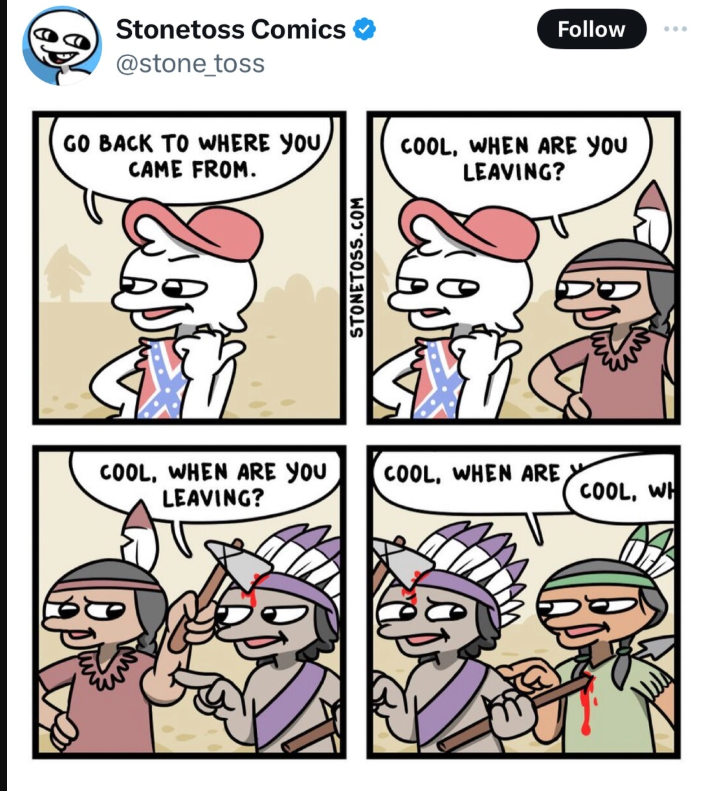We often hear people say things like, “unless you’re Native American, you’re an immigrant to this country.”
A common, and powerful, objection to this claim is that Native American tribes frequently conquered each other, took each other’s land, and replaced each other long before the arrival of the White Man. Therefore, the only way to claim that Native Americans are native to the land is to adopt the White Man’s concept of America – a concept that was entirely foreign to Native Americans prior to European colonization.

Along the same lines, we should point out that a member of the Lakota tribe (for example) is only native to parts of what we now call the “Midwest.” When a Lakota moves to California, the only way we could consider him “native” is if we hold him subject to the White Man’s colonial perception of “America” or the “United States.” By his tribe’s own indigenous standards, he would not be “native” outside of the Midwest.
This is a built-in contradiction to leftist claims of Native Americans being indigenous to the entirety of the United States.
Even more ridiculous is the leftist claim that, somehow, natives of what is now “Mexico” have more of a right to be in the United States – because they’re “indigenous to America.” The very concept of “America” was a White invention. Is there a Navajo word for “America?” It’s sometimes claimed that the Algonquian and Iroquoian term “Turtle Island” referred to America, but there’s no evidence that they had any knowledge of other continents; Turtle Island would have meant “the known world,” not any specific continent.
If a group of Aztecs wandered north, in pre-colonial times, and told the Apache people that what is now Texas is also their home, by virtue of it being part of North America, the Apache would probably have responded by killing them. At the very least, the claim would have elicited laughter.
In contrast, Native Europeans have had a concept of “Europe” or “Christendom” for centuries. When the Ottomans gathered an army and besieged Vienna in 1683, other European nations rallied to Vienna’s defense. All of Europe, with the exception of a small part of Turkey, shares enough commonality to be considered one civilization.
From Grok:
The earliest inklings of a pan-European identity can be traced to the Middle Ages, particularly from the 8th to 11th centuries, when shared religious, cultural, and political developments began to foster a sense of commonality across diverse European groups.
The same might be said of Eastern Asia and the Middle East. Native Americans had no such concept until it was forced upon them by outsiders in more recent times. Again, I’ll quote Grok:
The concept of a pan-Native-American identity, where diverse Indigenous peoples across North America saw themselves as part of a unified cultural or political group, is largely a modern phenomenon, emerging in response to shared experiences of European colonization, displacement, and cultural suppression. There’s little evidence of such an identity before European contact, as Native American societies were highly diverse, with distinct languages, cultures, and political structures, often organized by tribe, clan, or regional confederacies like the Haudenosaunee (Iroquois Confederacy).
Despite all this, I’m not claiming that there is no validity to a wider Native-American identity. I do believe that Native American tribes should work together to further their own interests, protecting their cultures, languages and traditional lands. At the same time, we should all recognize that the very concept of “Native-American” is a White invention, made relevant only through White colonialism.
If not for White colonialism, the various tribes of the Americas would still be at constant war with each other, raiding each other, enslaving each other, eating each other and sacrificing each other to their gods.


